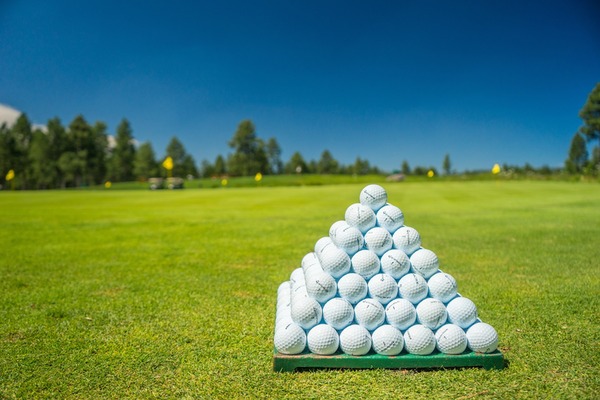
Typically, a golf ball has 336 dimples across its surface, which are purposely included to help reduce drag as the ball moves through the air. These dimples create turbulence in the boundary layer surrounding the ball, which helps to increase lift and reduce drag. This allows the ball to fly longer distances than it would without them.
The shape of these dimples can be circular, elliptical or even teardrop shaped. Usually there are more shallow dimples on an aerodynamically designed golf ball, while there may be deeper or larger dimples on a distance-oriented golf ball. The amount of dimples also varies from model to model; some balls may have fewer than 300, while others could have over 400.
The size and depth of the dimples also plays a role in how far a golf ball will travel when hit with a driver or iron club. Generally speaking, shallower dimples create less spin on impact and allow for more distance but lower accuracy. Deeper dimples provide more spin but less distance and greater accuracy on shots that require more control around a green-side bunker or other hazard.
Overall, having 336 dimples on a golf ball is essential for maximizing performance off the tee box or fairway. Without them, balls would not be able to travel as far or accurately as they do today making it nearly impossible for professional players to compete at their highest level and amateurs alike to enjoy rounds of 18 holes with friends and family!
Golf balls are typically made of a hard rubber core and a polyurethane cover. The rubber core is the most important element, as it is responsible for the ball's resilience and springiness. The core usually has two or three layers and is either solid or liquid-filled. The innermost layer is made of a soft material to give the ball its characteristic bounce, while the middle layer can be filled with gas or liquid to create greater compression and speed on impact. The outer layer of the core provides durability by resisting cuts and scuffs from clubs during shots.
The polyurethane cover gives the golf ball its tactile feel, as well as providing resistance against abrasion when hitting shots off the tee box or fairway. It also helps produce spin for better control around greenside hazards by adding friction between the club and ball on contact. This cover can be smooth or textured depending on what type of spin the manufacturer wants to impart onto their product.
The two elements – rubber core and polyurethane cover – work together in harmony to produce optimal performance when playing golf. Without them, golfers would not be able to hit shots with accuracy, distance, spin or control - all of which are essential factors to success on the course! Furthermore, modern technologies such as titanium cores and dimple patterns have allowed manufacturers to produce even more resilient golf balls tailored specifically for different playing levels and styles - from amateur players looking for an entry-level model all the way up to professional players seeking maximum performance for tournament play.
